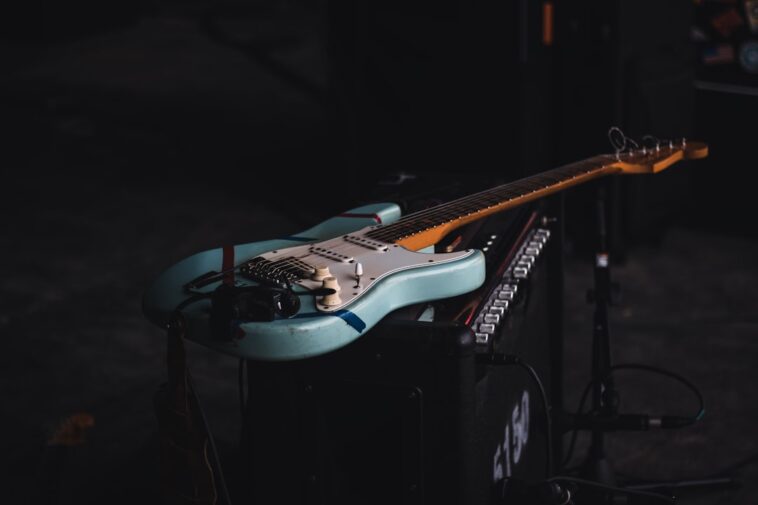So, you want to learn how to play guitar? Awesome! Learning guitar can be a really rewarding experience. It’s a fun way to express yourself, impress your friends, and even write your own songs. It might seem tricky at first, but with a little practice and patience, you’ll be strumming your favorite tunes in no time. This guide will walk you through the basics to get you started on your guitar journey.
Choosing Your Guitar
First things first, you’ll need a guitar! There are a few different types to choose from, and the best one for you will depend on your personal preferences and what kind of music you want to play.
Acoustic Guitars: These are great for beginners because they don’t require any extra equipment like amplifiers. Acoustic guitars are generally more affordable and portable than electric guitars. There are two main types of acoustic guitars: steel-string and nylon-string (classical). Steel-string guitars are more common and are used for a wide variety of music genres. Nylon-string guitars have a softer sound and are often used for classical and flamenco music. If you’re just starting out, a steel-string acoustic guitar is usually a good choice.
Electric Guitars: Electric guitars require an amplifier to be heard properly. They’re often used in rock, blues, and metal music. Electric guitars can be more versatile than acoustic guitars because you can use different effects pedals to change the sound. However, they can also be more expensive due to the need for an amplifier and other accessories.
Consider your size: Guitars come in different sizes. If you’re a younger player or have smaller hands, a smaller-sized guitar (like a 3/4 size) might be more comfortable to play.
Getting to Know Your Guitar
Now that you have a guitar, let’s take a look at its parts. Knowing the names of the different parts will help you understand instructions and communicate with other guitar players.
Headstock: The top part of the guitar where the tuning pegs are located.
Tuning Pegs (Tuners): Used to adjust the tension of the strings, which changes their pitch.
Nut: A small piece of material (usually plastic or bone) that guides the strings from the headstock to the fretboard.
Neck: The long, wooden part of the guitar that connects the headstock to the body.
Fretboard: The surface of the neck where you press down on the strings to change their pitch.
Frets: The metal bars that are embedded in the fretboard.
Body: The main part of the guitar that resonates and produces sound.
Soundhole (on acoustic guitars): The opening in the body that allows the sound to project.
Bridge: The part of the guitar that holds the strings in place on the body.
Strings: The wires that vibrate to produce sound. Guitars typically have six strings.
Tuning Your Guitar
One of the most important things you need to do before you start playing is tune your guitar. A guitar that’s out of tune will sound awful, no matter how well you play. You can use a guitar tuner (either an electronic tuner or a tuning app on your phone) to help you tune your guitar. The standard tuning for a guitar is E-A-D-G-B-e (from thickest to thinnest string).
There are many online resources and apps that can guide you through the tuning process. It may seem daunting at first, but with a little practice, you’ll be able to tune your guitar quickly and easily.
Learning Basic Chords
Chords are the foundation of most guitar music. Learning a few basic chords will allow you to play a wide variety of songs. Some of the most common beginner chords include:
E Major: Place your first finger on the third string (G string), first fret. Place your second finger on the fifth string (A string), second fret. Place your third finger on the fourth string (D string), second fret. Strum all six strings.
A Major: Place your first finger on the second string (B string), second fret. Place your second finger on the fourth string (D string), second fret. Place your third finger on the third string (G string), second fret. Strum strings five, four, three, two and one. Don’t play the thickest string.
D Major: Place your first finger on the third string (G string), second fret. Place your second finger on the first string (high E string), second fret. Place your third finger on the second string (B string), third fret. Strum strings four, three, two and one. Don’t play the thickest or the second thickest strings.
G Major: Place your first finger on the fifth string (A string), second fret. Place your second finger on the sixth string (low E string), third fret. Place your third finger on the first string (high E string), third fret. Strum all six strings.
Practice switching between these chords smoothly. This will take time and practice, so be patient with yourself.
Learning Basic Strumming Patterns
Once you know a few chords, you can start learning some basic strumming patterns. A simple strumming pattern to start with is “down, down, down, down.” This means you strum downwards across the strings four times in a row. As you get more comfortable, you can try more complex strumming patterns, such as “down, up, down, up.”
Experiment with different strumming patterns to find what sounds good to you. There are no hard and fast rules, so feel free to get creative.
Practicing Regularly
The key to learning guitar is to practice regularly. Even just 15-30 minutes of practice each day can make a big difference. Try to find a time that works well for you and stick to it as much as possible. Don’t get discouraged if you don’t see results immediately. Learning guitar takes time and effort, but it’s definitely worth it.
Online Resources and Lessons
There are tons of great online resources and lessons available to help you learn guitar. YouTube is a great place to find free guitar lessons for beginners. There are also many websites and apps that offer paid guitar lessons. These lessons often provide more structured instruction and personalized feedback.
Guitar Accessories
As you progress, you might want to invest in some guitar accessories. Some useful accessories include:
Guitar Picks: Used to strum or pluck the strings. Different thicknesses of picks will produce different sounds.
Guitar Strap: Allows you to play the guitar while standing up.
Guitar Case: Protects your guitar from damage.
Guitar Tuner: Helps you tune your guitar accurately.
Taking Care of Your Guitar
It’s important to take care of your guitar to keep it in good condition. This includes cleaning your guitar regularly, changing the strings when they get old, and storing your guitar in a safe place.
Frequently Asked Questions
How long will it take to learn how to play guitar?
It depends on how much you practice and how quickly you learn. With consistent practice, you can start playing simple songs within a few weeks or months. However, it takes years of practice to become a truly skilled guitar player.
Is it easier to learn on an acoustic or electric guitar?
Acoustic guitars are generally considered easier to learn on because you don’t need any extra equipment. However, some people find electric guitars easier to play because the strings are lighter and the action (the distance between the strings and the fretboard) is lower.
What is the best way to learn guitar?
The best way to learn guitar is to find a method that works for you. Some people prefer to take lessons from a teacher, while others prefer to learn online. Experiment with different methods and see what works best for you.
What if my fingers hurt when I play?
It’s normal for your fingers to hurt when you first start playing guitar. This is because your fingers are not used to pressing down on the strings. As you continue to play, your fingers will develop calluses, which will make it less painful. In the meantime, you can try playing for shorter periods of time and taking breaks when your fingers start to hurt.
Learning to play the guitar is a journey, not a race. Enjoy the process of learning, and don’t be afraid to make mistakes. With a little practice and patience, you’ll be playing your favorite songs in no time. Keep strumming, keep practicing, and most importantly, have fun!



GIPHY App Key not set. Please check settings